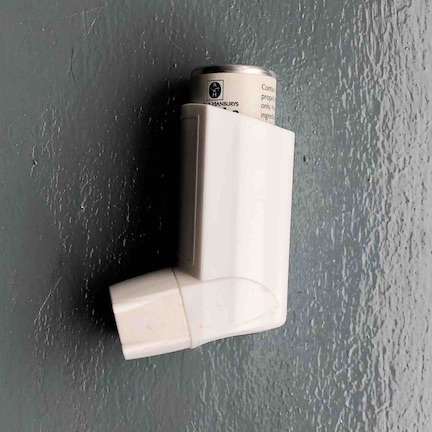A fungal infection around the mucous membranes of the mouth, most commonly caused by Candida albicans infection. It is an opportunistic infection, therefore usually seen in those that are immunocompromised. Patients with respiratory disease who use steroid inhalers must ensure that they wash their mouth after use, otherwise, this could lead to local immunosuppression and candidiasis .
Introduction
Introduce yourself with your name and role, and confirm the patient’s name and date of birth. Obtain consent and wash your hands.
History
Establish the patient’s understanding of their condition and why they need to use a peak flow meter. Then proceed to fill any gaps in their knowledge. This should be summarised using only a few sentences.
Inhaler technique
There are various ways to approach this part. The ‘tell, show, do’ approach works well. This involves talking to the patient through the steps (listed below), moving to you demonstrating the correct technique to the patient (by using a dummy inhaler) and then finally asking the patient to perform the correct inhaler technique.
The correct technique will now be described below.
Preparing the inhaler
Begin by checking the expiry date. This can be identified by simply removing the metal canister containing the medicine, from the plastic casing, and then replacing it once finished. Advise the patient that they will need to get a new prescription if out of date. Some inhalers also show a number (a counter) giving the number of puffs that are still left – make sure you look for this on the inhaler when you pick it up. Next, shake the inhaler for 5 seconds and remove the cap. This mixes the medicine (e.g. salbutamol) with the propellant inside.

A typical metered dose inhaler.
Using the inhaler
Ensure that you are either standing or sitting upright when demonstrating. This is important because it allows you to breathe in deeply. Hold the inhaler upright and breathe out. Form a tight seal around the mouthpiece with your tongue below the mouthpiece so it does not obstruct the spray. Begin taking a slow, deep breath in and simultaneously press the canister at the top down, taking in as much air as is comfortable. Hold your breath for 10 seconds to allow the medication to spread as deep into the airways as possible, before breathing out. Breathe normally afterwards and place the cap back on the inhaler.
They should also follow the recommendations provided with the inhaler about cleaning it. Inform the patient that if they need another dose from their blue inhaler, there should be at least a 30 second gap since the previous dose.
If the patient has been prescribed a preventer (brown) inhaler containing steroids, ensure you advise them to rinse their mouth after use to prevent opportunistic infections to occur, such as oral thrush.
Ending the demonstration
Once you have finished demonstrating and explaining, check for understanding and ask the patient to demonstrate the process back to you.
Ask if the patient has any questions about this part before moving on. Some important advice or answers to the questions they may ask include:
- Common side effects include tachycardia, headache and tremor. The blue (reliever) inhaler is used as and when you need it. The brown (preventer) inhaler is used twice every day (morning and night), regardless of whether you experience any symptoms or not.
- If you run out of medication or it appears to not be working, make sure you come back to get a new prescription.
- If you require your blue inhaler more than 3 times a week, go see your GP and they can review your medication.
- You can use your salbutamol inhaler up to a maximum of ten puffs in an attack (with 30 seconds between each puff). If this doesn’t provide relief, either call 999 or go to your closest A&E. If 15 minutes have passed and the ambulance hasn’t arrived, then take another 10 puffs.
